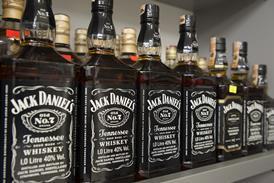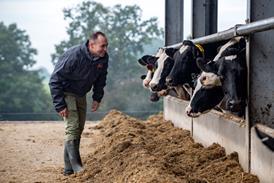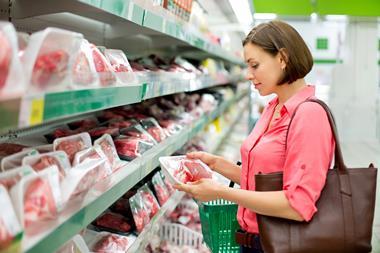Was the quota row just a storm in a teacup, asks Glynn Davis
The China trade quotas grabbed column inches at a quiet time for the media. But, as clothing deliveries were held up in ports and warehouses for several weeks on the reintroduction of the quotas for imports into EU countries, the spotlight was very much on the impact on high street clothing retailers. What about Tesco and Asda, both of which rely increasingly on textile imports from the country?
The consensus is that the general impact was overplayed and that it was over as soon as the solution was put in place, deferring some quota limits to next year and allowing the block on goods entering the country to be lifted and goods to be released.
Michael Daly, MD of DTS Logistics, says: “It was overblown by the media and was not a big deal for the supermarkets. The backlog will have been cleared in days because embargoed product was not actually sitting in docks but in bonded warehouses so it could then be despatched quickly when it was released.”
Because Asda has a large manufacturing base in Turkey, Daly believes it will have fared reasonably well. This is the line Asda takes. “We’ve not been affected as we have been able to source from elsewhere,” insists a spokeswoman. “There has not been a major problem with products stuck in any ports.”
Tesco may even have benefited. Although it would have been caught out more than Asda by the hold-up, believes Daly, it had been overstocked for some time and the brief re-introduction of quotas could have cleared its stock pipeline.
Mike Dennis, analyst at CAI Cheuvreux, agrees that it has not been a big problem even though he estimates that Tesco sources as much as 40% of its £700m of clothing from China, which he says equates to around £200 million of stock (at cost).
As its Asian buying office is based in Hong Kong, Tesco would have been able to co-ordinate the legitimate shipping of semi-made clothing out of China and into Hong Kong - where it would have been finished - and on to the EU in order to get around the quotas, though this would have been at a cost, he argues.
Clive Black, analyst at Shore Capital, calculated that the amount of product involved in the hold-up was sufficiently small to have limited effect on group profits. “The amount would not even be into seven figures,” he says.
The configuration of the Tesco business has given it the advantage of being able to divert some of its EU-bound product to Asian stores, he said.
He added that he does not see why Asda would not be able to divert product to other regions in a similar way.
However, Shanghai-based Jeremy Butler, head of the China desk for KPMG, remains concerned that the solution implemented to unblock the supply chain is a “little bit of a fudge” and speculates that the supermarkets will be worried about the stability of their sourcing arrangements with China.
“They need stability and the current situation is not stable. There has been political interference and it [the block] has been cleared but it has not been fixed long-term. We need a proper solution.”
Despite these concerns, Richard McKenzie, director of the retail practice at OC&C Strategy Consultants, believes that the quotas fiasco is merely a glitch and that it will not put the multiples’ off their stride in sourcing from the region.
“Part of the price negotiations for retailers sourcing in China was the cost of ‘quotas’ that they had to pay suppliers, but with these removed in January we expect a decrease in the unit cost of product from China of between 15% and 20% to come in over the next three to four years,” he says.
Daly believes that all these developments could lead to retailers spreading their sourcing net more widely.
“There could now be a policy of sourcing no more than 50% of goods from China,” he says. “With the beneficiaries being Sri Lanka, Vietnam and India, this recent fiasco will probably prove to be good for the world economy,” he says.
The China trade quotas grabbed column inches at a quiet time for the media. But, as clothing deliveries were held up in ports and warehouses for several weeks on the reintroduction of the quotas for imports into EU countries, the spotlight was very much on the impact on high street clothing retailers. What about Tesco and Asda, both of which rely increasingly on textile imports from the country?
The consensus is that the general impact was overplayed and that it was over as soon as the solution was put in place, deferring some quota limits to next year and allowing the block on goods entering the country to be lifted and goods to be released.
Michael Daly, MD of DTS Logistics, says: “It was overblown by the media and was not a big deal for the supermarkets. The backlog will have been cleared in days because embargoed product was not actually sitting in docks but in bonded warehouses so it could then be despatched quickly when it was released.”
Because Asda has a large manufacturing base in Turkey, Daly believes it will have fared reasonably well. This is the line Asda takes. “We’ve not been affected as we have been able to source from elsewhere,” insists a spokeswoman. “There has not been a major problem with products stuck in any ports.”
Tesco may even have benefited. Although it would have been caught out more than Asda by the hold-up, believes Daly, it had been overstocked for some time and the brief re-introduction of quotas could have cleared its stock pipeline.
Mike Dennis, analyst at CAI Cheuvreux, agrees that it has not been a big problem even though he estimates that Tesco sources as much as 40% of its £700m of clothing from China, which he says equates to around £200 million of stock (at cost).
As its Asian buying office is based in Hong Kong, Tesco would have been able to co-ordinate the legitimate shipping of semi-made clothing out of China and into Hong Kong - where it would have been finished - and on to the EU in order to get around the quotas, though this would have been at a cost, he argues.
Clive Black, analyst at Shore Capital, calculated that the amount of product involved in the hold-up was sufficiently small to have limited effect on group profits. “The amount would not even be into seven figures,” he says.
The configuration of the Tesco business has given it the advantage of being able to divert some of its EU-bound product to Asian stores, he said.
He added that he does not see why Asda would not be able to divert product to other regions in a similar way.
However, Shanghai-based Jeremy Butler, head of the China desk for KPMG, remains concerned that the solution implemented to unblock the supply chain is a “little bit of a fudge” and speculates that the supermarkets will be worried about the stability of their sourcing arrangements with China.
“They need stability and the current situation is not stable. There has been political interference and it [the block] has been cleared but it has not been fixed long-term. We need a proper solution.”
Despite these concerns, Richard McKenzie, director of the retail practice at OC&C Strategy Consultants, believes that the quotas fiasco is merely a glitch and that it will not put the multiples’ off their stride in sourcing from the region.
“Part of the price negotiations for retailers sourcing in China was the cost of ‘quotas’ that they had to pay suppliers, but with these removed in January we expect a decrease in the unit cost of product from China of between 15% and 20% to come in over the next three to four years,” he says.
Daly believes that all these developments could lead to retailers spreading their sourcing net more widely.
“There could now be a policy of sourcing no more than 50% of goods from China,” he says. “With the beneficiaries being Sri Lanka, Vietnam and India, this recent fiasco will probably prove to be good for the world economy,” he says.














No comments yet